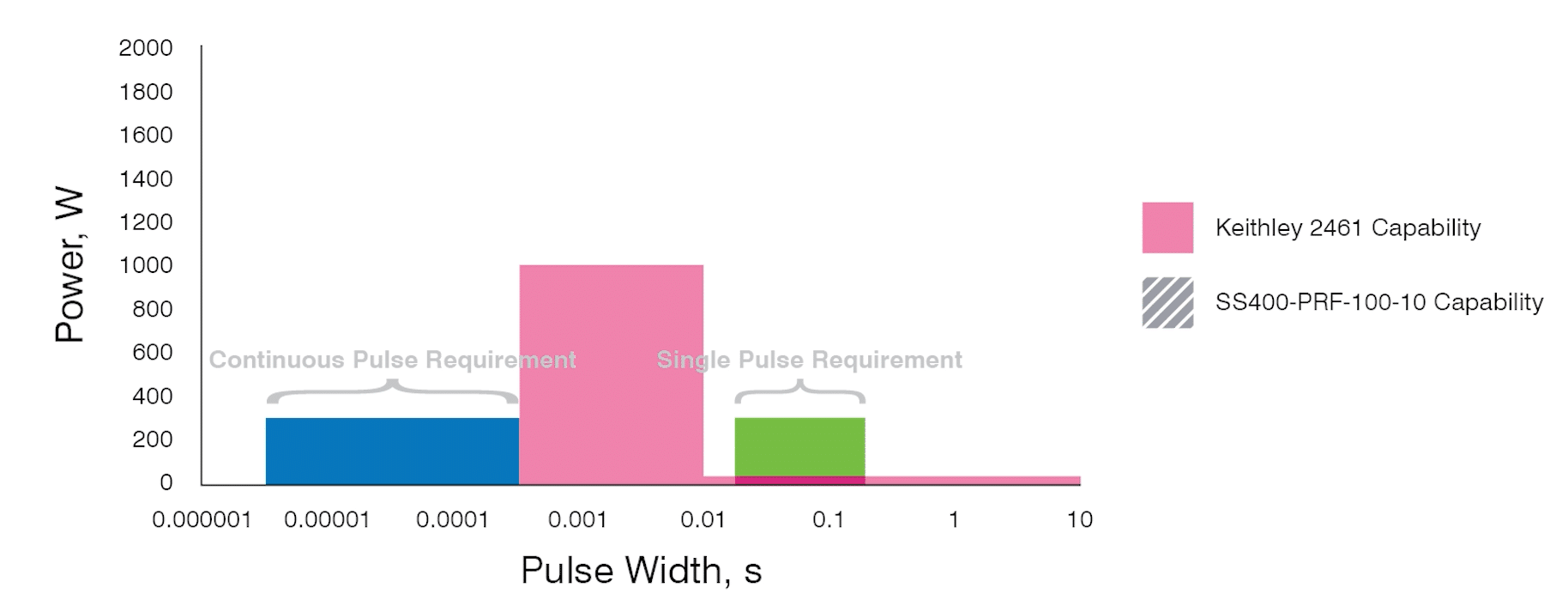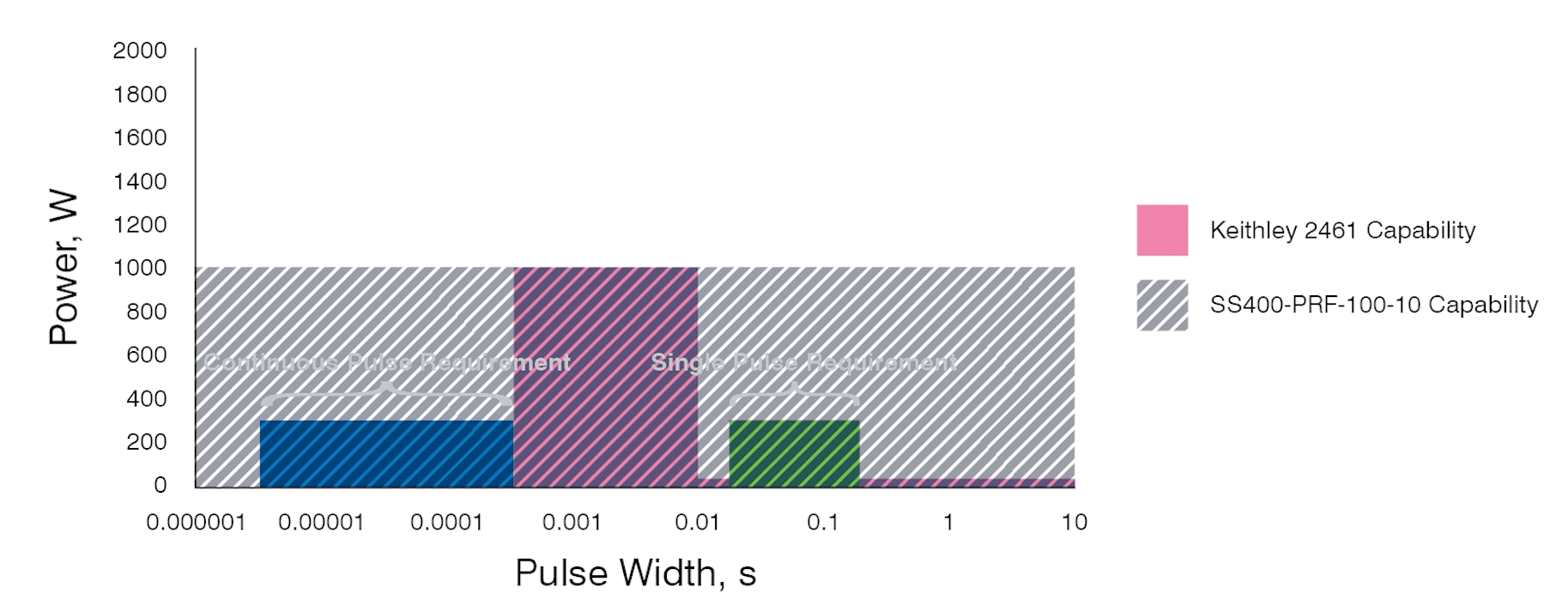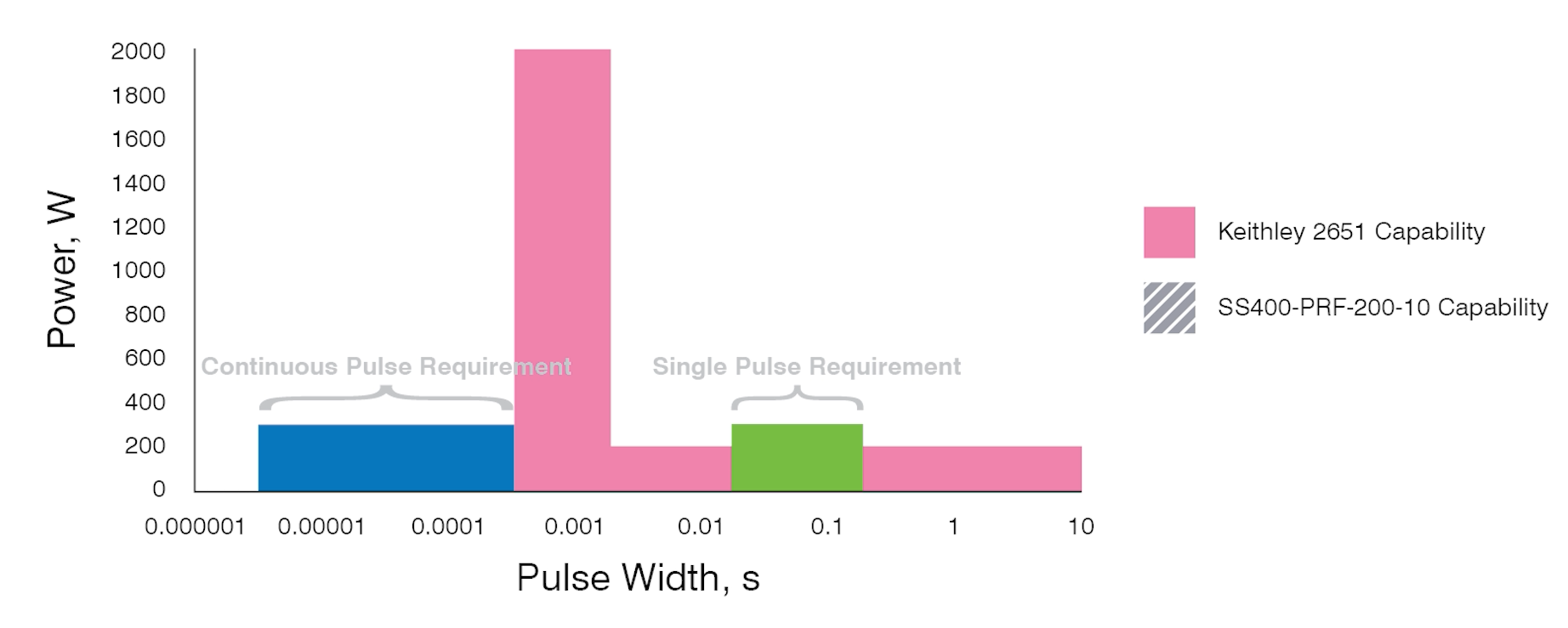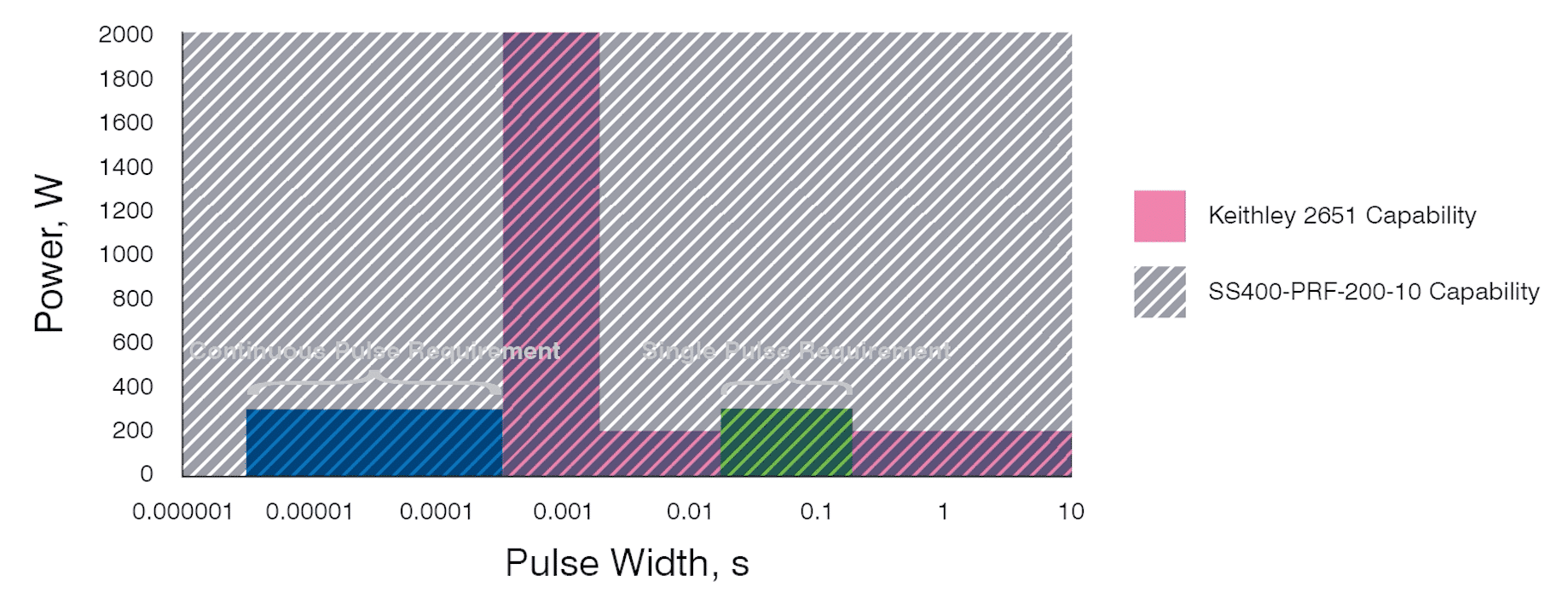Does Your Current Source Have Hidden Limitations?
LEDs, VCSELs, laser diodes, and other devices must be tested at their max capacity for the required amount of time to achieve accurate test data. This is especially true if they are being tested with industry-standard test methods like LM-85’s Single Pulse and Continuous Pulse.
Some current sources and source measure units provide their maximum advertised power in a limited pulse width range, making them useless for the aforementioned test methods.
Let’s look at some examples.
Pulsed Power Comparison – Testing a 300W Device with SpikeSafe and Keithley Current Sources
To test a 300W device properly, you need to power it to its max capacity for a specific duration. First, let’s look at how the power capabilities of the Keithley 2461 match up with the power and pulse width requirements for this test.

Given that this Keithley unit is advertised as a 1000W source, one might expect that the Keithley 2461 has more than enough power to test the 300W device. However, as shown in the graph above, this Keithley unit provides plenty of power, but it doesn’t provide it in a useful pulse width, making it ineffective for both Single Pulse and Continuous Pulse tests.
Let’s overlay the power capabilities of a 10A/100V SpikeSafe Performance Series Current Source for comparison.

SpikeSafe Current Sources provide sustained output power which means that they have no duty cycle or pulse width limitations. This technology ensures that the SpikeSafe Current Source will be able to test the 300W device with both Single Pulse and Continuous Pulse.
Testing the Same 300W Device with a Higher-Power Source
Let’s test the same 300W device but this time, use a higher-power Keithley source (the 2651) to see if it will be able to test the device with either Single or Continuous Pulse.

Again, the Keithley unit provides plenty of power, but it doesn’t provide it in the pulse width needed for the test. Neither the Keithley 2461 or the Keithley 2651 will be able to test the 300W device.
As previously mentioned, SpikeSafe Current Sources don’t face the same limitations as Keithley sources. For the sake of completing the example, let’s overlay a 2000W SpikeSafe Current Source on the graph. Note the complete coverage that the SpikeSafe Current Source provides compared to the Keithley source.

Get the Power and Pulse Width You Need
When selecting equipment to test your devices, make sure you are getting the power and pulse width that you need. Purchase a current source that has no duty cycle or pulse width limitations and avoid equipment with hidden limitations that will prevent you from properly testing your devices.